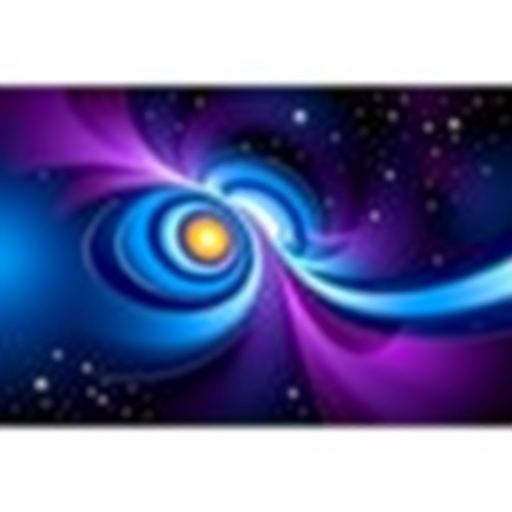The field of gravitational wave astronomy has seen remarkable developments since the first detection of gravitational waves in 2015 by the Laser Interferometer Gravitational-Wave Observatory (LIGO). The vision of observing gravitational waves opened a new window into astrophysics, revealing insights into cataclysmic cosmic events. Yet, one of the most enduring potentials lies in the detection of stochastic gravitational-wave backgrounds, which are composed of superpositions of numerous unresolvable signals from various sources. Such backgrounds carry significant information about the dynamics and evolution of the universe, yet their detection poses unique challenges.
Detection of gravitational-wave backgrounds requires sophisticated statistical techniques that can disentangle these weak cosmic signals from the noise that is intrinsic to any measurement. The intricate methodologies employed in this domain are crucial for maximizing sensitivity to these faint signals. Researchers are continually refining their approaches to detect and analyze these stochastic gravitational wave backgrounds, striving for methodologies that can provide clearer, more informative cosmic data.
One prominent approach detailed in the literature is the Bayesian framework for gravitational-wave background detection. This statistical methodology allows for a more systematic treatment of uncertainties inherent in gravitational wave measurements. Bayesian analysis is particularly powerful as it provides a coherent framework that can incorporate prior knowledge and update beliefs about parameters as data are observed. By using this method, astrophysicists can more effectively model the stochastic nature of gravitational radiation that emanates from various cosmic sources, particularly those that are too distant or weak to be resolved individually.
Another compelling technique is the use of matched filtering, which involves correlating the observed data with templates of gravitational waveforms based on theoretical predictions. This approach capitalizes on the knowledge of potential sources and their characteristic waveforms, improving the likelihood of detecting stochastic backgrounds amidst overwhelming noise. Employing matched filtering not only enhances the detection capabilities but also allows for a clearer understanding of the properties of the gravitational-wave sources, forging connections between theoretical models and observational data.
Furthermore, the synergy between different detectors, such as LIGO and Virgo, has opened avenues for cross-correlation techniques. By analyzing data gathered from multiple observatories, astronomers can exploit the advantages of diverse detector sensitivities and geographical distributions, allowing for more robust stochastic background measurements. This collaboration across facilities expands the capability to track various gravitational-wave sources as they contribute to the background, ultimately enriching our comprehension of the universe’s history.
The cosmological implications of detecting stochastic gravitational-wave backgrounds cannot be overstated. These backgrounds can shed light on early epochs of the universe, including the period of inflation, and help us understand the underlying physics governing these events. By capturing the gravitational waves generated in primordial conditions or from exotic astrophysical sources, scientists can piece together a more coherent narrative of cosmic evolution.
In addition to astrophysical events, gravitational waves also carry information about fundamental physics. The potential discovery of signatures indicative of new physics beyond the current understanding could revolutionize not only astrophysics but also fundamental theories of gravity and the structure of spacetime. This interplay between gravitational waves and fundamental physics offers a tantalizing frontier, as the existence of stochastic backgrounds could support theories of quantum gravity or indicate phenomena that current models cannot explain.
Sophisticated signal processing and data analysis techniques are paramount in the quest for these signals. Efforts in machine learning and artificial intelligence play an increasing role in enhancing the detection and characterization of gravitational-wave signals. By training algorithms on vast datasets, researchers can improve the efficiency and accuracy of detection methodologies, thereby paving the way for potentially groundbreaking discoveries in the coming years.
The integration of multi-messenger astrophysics is particularly noteworthy, where gravitational-wave signals are studied alongside electromagnetic and neutrino signals from cosmic events. This holistic approach allows for a comprehensive study of phenomena such as supernovae or neutron star mergers, providing deeper insights into the processes at play. The collaborative nature of such research embodies the spirit of modern astrophysics, where interdisciplinary collaboration is essential to unravel the complexities of the universe.
The implications of advancements in gravitational wave detection extend beyond theoretical astrophysics into practical applications. The technology developed for high-precision measurements is finding uses in various fields, including engineering and applied sciences. This cross-pollination of ideas demonstrates the broader impact of astrophysical research, showcasing how fundamental discoveries can lead to technological innovations that enhance everyday life.
As research progresses, the horizon of gravitational-wave detection continues to expand, heralding a new era of observational astronomy. The ongoing development of next-generation detectors like LIGO-India and the planned space-based observatory LISA (Laser Interferometer Space Antenna) promise to enhance our capabilities significantly. With increased sensitivity and broader frequency ranges, these new instruments are poised to provide unparalleled insights into the gravitational-wave universe.
In conclusion, the study of gravitational-wave backgrounds is not merely about detecting faint cosmic whispers; it represents a profound journey into the fabric of the universe. As researchers refine their methodologies, collaborate across disciplines, and explore the synergy of multi-messenger astronomy, the potential for significant scientific advancements grows. With the promise of unveiling new realms of knowledge, the quest for stochastic gravitational-wave backgrounds stands as one of the most exciting frontiers in contemporary astrophysics.
Subject of Research: Gravitational Waves and their Stochastic Backgrounds
Article Title: Detection methods for stochastic gravitational-wave backgrounds: a unified treatment.
Article References:
Romano, J.D., Cornish, N.J. Detection methods for stochastic gravitational-wave backgrounds: a unified treatment.
Living Rev Relativ 20, 2 (2017). https://doi.org/10.1007/s41114-017-0004-1
Image Credits: AI Generated
DOI:
Keywords: Stochastic Gravitational Waves, Gravitational Wave Detection, Bayesian Analysis, Multi-Messenger Astrophysics, Machine Learning in Astronomy




